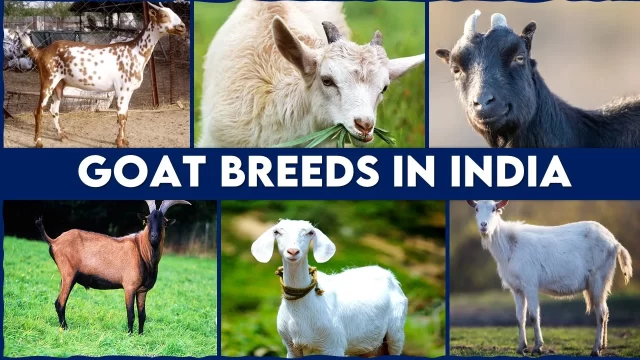
Introduction:
India, a land of diverse cultures and traditions, has a long-standing history of dairy farming. While cows are often the focal point of dairy discussions, goats play a significant, albeit less acknowledged, role in the country’s dairy industry. In recent years, the contribution of goats to India’s dairy sector has gained recognition, showcasing their potential to transform rural livelihoods and enhance nutritional security.
Diversity in Goat Breeds:
India boasts a rich diversity of goat breeds, each adapted to varying climatic conditions and geographic landscapes. From the sturdy Jamunapari of Uttar Pradesh to the prolific Beetal of Punjab and the resilient Barbari of Rajasthan, these indigenous breeds form the backbone of India’s goat farming sector. Their adaptability to harsh environments and ability to thrive on diverse diets make them invaluable assets to farmers across the nation.
Milk Production and Quality:
While goats typically produce less milk compared to cows, their milk is rich in essential nutrients and is easier to digest, making it an ideal choice for infants, elderly individuals, and those with lactose intolerance. Goat milk is also renowned for its therapeutic properties, aiding in the management of various health conditions such as hypertension and gastrointestinal disorders. The growing demand for goat milk and its by-products like cheese and yogurt presents a lucrative opportunity for dairy farmers to diversify their income streams.
India is the world’s top producer of milk, with 230.58 MT (2022-23), up 3.83% from 2021–22. A total of 3.30% of the milk produced in the nation comes from goats.At 8908.9 thousand tonnes, Rajasthan is the leading producer of goat milk in all of India.

Quality of Goat milk

Economic Empowerment:
In rural India, where agriculture remains the primary source of livelihood for millions, goat rearing serves as a sustainable income-generating activity. Goats require minimal investment and space, making them accessible to smallholder farmers with limited resources. The sale of goats, both for meat and milk, provides a steady source of income, particularly during festivals and religious ceremonies when demand surges. Moreover, women in rural communities often play a significant role in goat rearing, empowering them economically and socially.
Ecological Sustainability:
Goats are efficient converters of low-quality forage into high-quality protein, requiring less feed compared to larger livestock species. This inherent efficiency makes them environmentally sustainable, reducing the ecological footprint associated with intensive livestock farming. Furthermore, goats play a vital role in land management by clearing invasive vegetation, preventing wildfires, and improving soil fertility through their grazing patterns.
Challenges and Opportunities:
Despite their numerous benefits, goat farming in India faces several challenges, including limited access to veterinary services, inadequate infrastructure, and lack of organized marketing channels. Addressing these challenges requires concerted efforts from policymakers, researchers, and industry stakeholders to promote sustainable goat farming practices, enhance productivity, and ensure fair market prices for farmers.
Conclusion:
In conclusion, the contribution of goats to India’s dairy industry cannot be overstated. From providing nutritious milk to empowering rural communities and promoting ecological sustainability, goats play a multifaceted role in the country’s agricultural landscape. As India strives towards achieving food security and rural prosperity, recognizing and harnessing the potential of goats in the dairy sector will be instrumental in building a resilient and inclusive agricultural system. With the right support and investment, goats can continue to be the unsung heroes driving positive change in India’s dairy industry for generations to come.
References:
- Basic Animal Husbandry Statstics-2023. https://dahd.nic.in/sites/default/filess/BAHS2023.pdf.

















